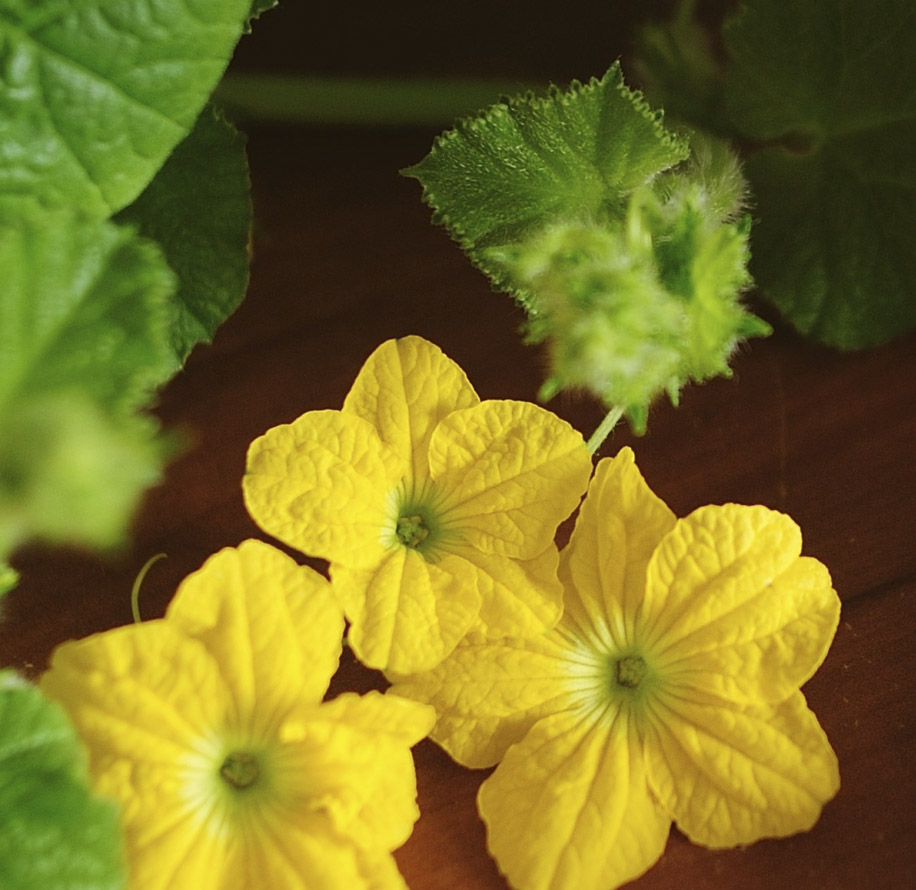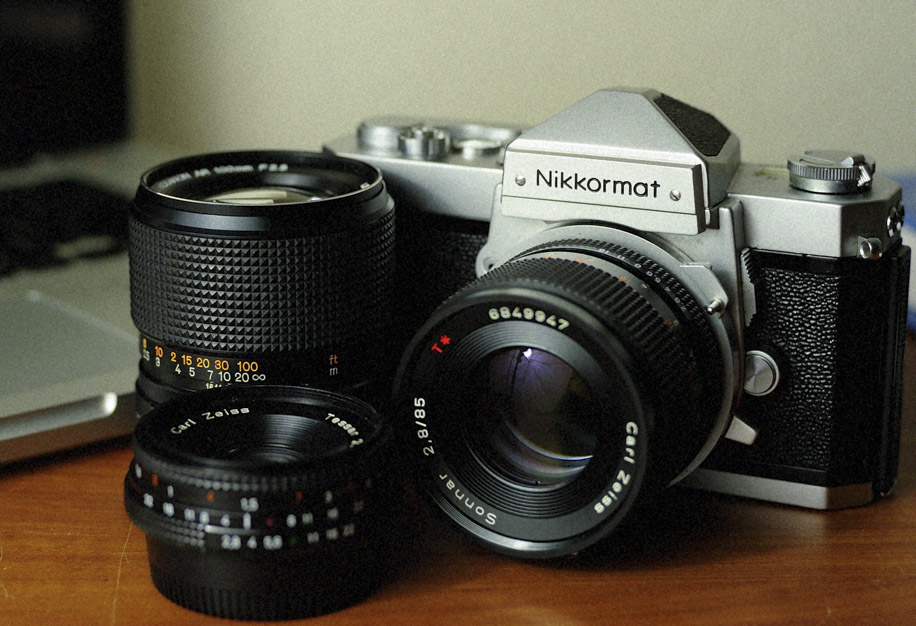Today’s guest post by Benjamin Ang is on the Nikkor-S 5cm 1:2 lens (click on images for lager view):
History and Overview
Released along side the Nikon F in 1959, the Nikkor-S 5cm f/2.0 was the first normal lens produced for the F-mount. It was quickly replaced by the Nikkor-H variant just 5 years later making it a bit of a difficult lens to find. While the 2 cousins resemble each other cosmetically, the ‘S’ has an optical formula of 7 elements – one more than that of the more ubiquitous ‘H’.
As can be seen, the 5cm is a good bit smaller than the 50/1.2 AIs: the other 50 I use frequently. It has the black and silver finish typical of early non-AI lenses and is similarly made exclusively of metal and glass. While not very dense, it feels solid and gives the impression of a serious piece of equipment. Its scalloped focus ring is precise with no play whatsoever, as is the aperture ring.
Sadly, I dented the filter thread when I dropped my F3 awhile back. I brought it in to a Nikon Service Center but they informed me the metal was too thick for their technicians to straighten out (I thought that was kinda funny).

A closer look at the 9-bladed aperture. The rim is shiny due to the modifications
stated below. Also note the lack of screws, a norm for early F-mount lenses.
The earliest 5cms had 9 aperture blades, and came without ‘click stops’ relying instead on ‘tick marks’ on the aperture ring. These are considered extremely rare and fetch terribly inflated prices on the market (as do all other ‘tick mark’ lenses). Later on, the usual click stops were incorporated, followed by a shift to having 6 aperture blades. The optical formula remained the same for all versions. The version I have has 9 blades, but no ‘tick marks’.
To mount this on my D700, I had to thin down the aperture ring by just a bit, and remove the ‘rabbit ears’. In its current configuration, it doesn’t communicate with the camera and you need to dial in compensation when stopping down. I’m working on adding a prong to connect to the AI tab, but I shoot the lens wide open most of the time and it hasn’t been too much of a bother as it is. The latest versions don’t require any work on the aperture ring.
Performance
I’m not one to test lenses for resolution and other technical details, so the following will be a short summary of my subjective experience.
The 5cm isn’t the sharpest of lenses, but is certainly sharp enough, even wide open, for real use. The central portion of the image is actually fantastic and leaves little to be desired, but there’s a noticeable drop in image quality toward the corners where colours may get a little smudgy. While stopping down improves resolution to a very good level, the extreme corners are never as crisp as newer lenses. In real life, however, it almost never bothers me.
In terms of contrast, it’s a bit of a mixed bag. In good light the lens performs well, giving pleasant, smooth colours. In dim/flat light, it doesn’t quite deliver the crisp of modern lenses. Colour rendition in the latter situation can get smudgy at times. Stopping down improves contrast and it’s very good from f/4 and above.
CA and LOCA are incredibly well corrected and are never ever an issue. (like, ever)
The lens flares quite a bit when the light comes in at a grazing angle. Thankfully, that’s hardly ever the case. What’s cool is that it is easy to induce when you want to, adding an extra tool for creativity.
For a more technical analysis, take a look at this comparison with the 50 1.8D.
Why the 5cm f/2.0?
‘Wait up…’ you say, ‘you have the 50/1.2 AIs, perhaps the best manual focus 50 made by Nikon, and you use this?!’
Well, yes, I do. And not just once in awhile either. Why? In my 6-odd years behind the camera, I’ve not touched Photoshop; I prefer to use the unique rendition of different lenses to capture and/or create atmosphere and emotions. While the 50/1.2 AIs is really special, it just isn’t the 5cm f/2 when it comes to rendition; I don’t think any other lens is.
Both lenses have a signature rendition: the 50/1.2 being crisp, yet dreamy and surreal, with unbeatable skin tones, becoming almost perfect when stopped down; the 5cm having a more removed, emotional and, at times, ‘retro’ rendition. The slightly muted contrast of the 5cm actually grants an incredible amount of plasticity in shadows and a smooth roll off in highlights. Wide open, images feel ‘dense’, and portray emotion and atmosphere beautifully. Stopped down a little, it becomes more typical, but still renders scene with a bit of an old school feel to them.
All in all, its output is unlike any other 50mm I’ve used to date and I really enjoy this lens for it’s unique character. The idea of shooting with a lens this old and unique is just fantastic icing on the cake. While the 5cm f/2 may not be ‘better’ than current lenses, it’s certainly very different.
Sample photos
Nikkor-S 5cm 1:2 sample images taken at f/2:
Nikkor-S 5cm 1:2 sample images taken at f/4:
Benjamin Ang is a full-time student at the University of Florida. His search for lenses with special ‘character’ has led him to use primarily manual focus prime lenses, and to convert lenses from other mounts for use on Nikon SLRs. He strives to capture and convey both atmosphere and emotion in his work, preferring to strip away colour to help viewers focus on these aspects. His website can be found here: http://snailartphotography.daportfolio.com.
If you have any interesting ideas for a guest post, you can contact me here.




















